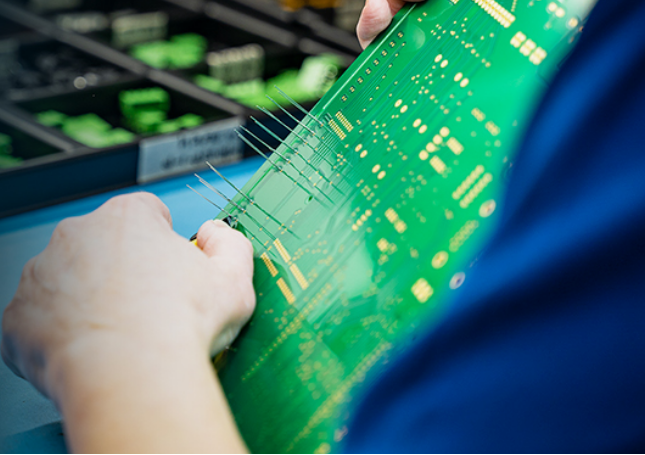
Through-Hole Technology vs. Surface Mount Technology
The Basics of THT and SMT
Through-Hole Technology and Surface Mount Technology are two of the most common assembly methods used when it comes to PCB production.
Through-Hole Technology refers to the mounting process where electrical components are connected to the PCB through leads inserted ‘through holes’ drilled into the board, before being soldered.
Surface Mount Technology refers to the mounting process where electronic components are soldered directly onto the surface of a PCB without the need for holes or leads.
Of the two technologies, THT is the oldest, however, with the rise of IoT and smaller electronic devices processing faster data, SMT has completely overtaken THT as the choice for electronic hardware.
In this blog, we explore the advantages and disadvantages of each method and applications where THT is still in use in the electronics industry.
The Pros and Cons of SMT
Pro: As components are soldered directly onto the board without the need for holes SMT components are smaller than that of THT.
Pro: Components can be mounted to both sides of the board allowing for a higher density of components over a much smaller PCB overall.
Pro: Removing the need for predrilled holes, SMT is a faster assembly process which also translates to a lower cost for manufacturing.
Pro: Surface Mount Assembly can be highly automated due to more reliable joint formation. The pick and place machines at Newbury Group for example allow us to position up to 200,000 components per hour.
Con: Due to the way components are attached to the board, SMT doesn’t deliver as strong a connection as THT.
Con: Rerouting a component is difficult so may not be the ideal choice for prototyping PCBs.
Con: Due to complications and precision of the assembly line, if there are any issues with the design this can cause a large number of defects.
The Pros and Cons of THT
Pro: Due to reinforced contact Through-hole components perform well in applications where they may be subjected to environmental stress including heat.
Pro: THT can be used well for prototyping as components can be conveniently replaced and manually adjusted if your board is still in its early production stages.
Pro: The stronger bonds of THT also mean it's ideal for connecting components that are larger/heavier.
Con: The need to drill holes adds not only time but also adds additional cost to circuit board manufacture.
Con: The size of components, the solder joint size, and the requirement for leads reduces the amount of space available for components, particularly in multilayer boards.
Conclusion
Due to the ability to use smaller components and with faster assembly and cheaper runs it’s hardly surprising that SMT is the most common technology used for modern PCB Assembly. However, Through-Hole still is required for industries where electronic components may be subject to high heat or where stronger connections are required for reliability such as in military and aerospace applications.
Here at The Newbury Group, we are equipped to provide quality circuit board assembly services utilising both Through-Hole Technology and Surface Mount Technology. So whether you are looking for the reduction in size and manufacturing costs of SMT or the higher heat endurance and stronger connections of THT, we can help.
Simply fill out our online form to get a quote for PCB assembly direct from our expert team of costing technicians.

